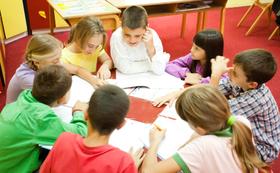Alderwood Early Childhood Center serves 67 students in grades Prekindergarten.
Minority enrollment was 16% of the student body (majority Hispanic), which was lower than the Washington state average of 52% (majority Hispanic).
School Overview
Grades Offered
Grades Prekindergarten
Total Students
67 students
Total Classroom Teachers
n/a
School Rankings
Student-Teacher Ratio
n/a
16:1
American Indian
n/a
1%
Asian
1%
9%
Hispanic
12%
26%
Black
3%
5%
White
84%
48%
Hawaiian
n/a
2%
Two or more races
n/a
9%
All Ethnic Groups
Eligible for Free Lunch
15%
49%
Eligible for Reduced Lunch
3%
n/a
School Statewide Testing
School District Name
Source: National Center for Education Statistics (NCES), WA Dept. of Education
Frequently Asked Questions
How many students attend Alderwood Early Childhood Center?
67 students attend Alderwood Early Childhood Center.
What is the racial composition of the student body?
84% of Alderwood Early Childhood Center students are White, 12% of students are Hispanic, 3% of students are Black, and 1% of students are Asian.
What grades does Alderwood Early Childhood Center offer ?
Alderwood Early Childhood Center offers enrollment in grades Prekindergarten
What school district is Alderwood Early Childhood Center part of?
Alderwood Early Childhood Center is part of Bellingham School District.
Recent Articles

Texas Schools Enrollment Trends & Policy in 2025
Latest data and policy changes on Texas public school enrollment growth, funding, and virtual education in 2025.

Financial Aid & Hidden Costs in ÎÛÎÛÂþ» Schools
Learn about financial aid and hidden costs in public schools. Discover what parents should budget for beyond tuition-free education.

NYC Schools Still Most Segregated in 2025
Despite reforms, New York City schools remain the most segregated in the U.S. in 2025. Here’s what parents and educators need to know.





